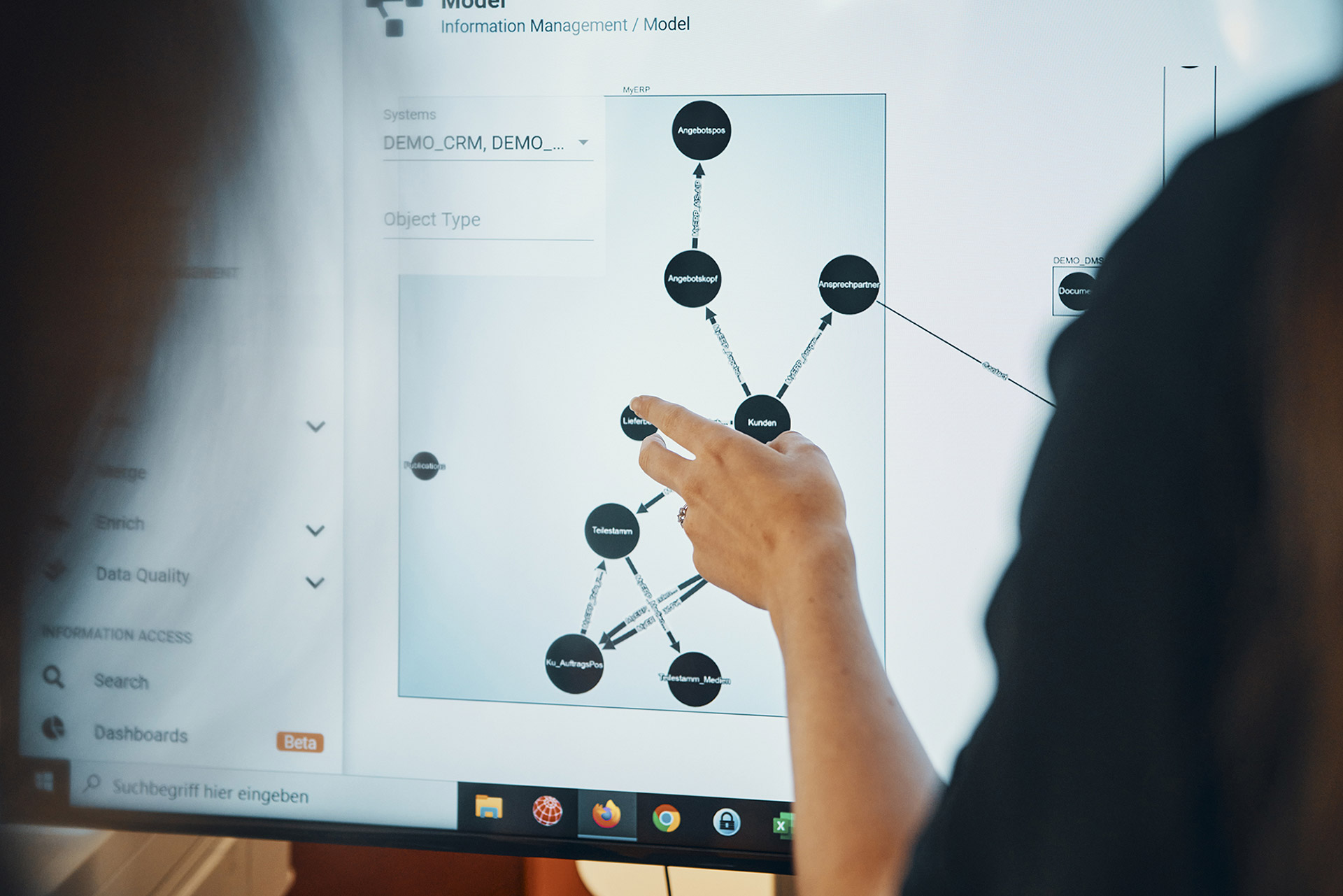In the context of traditional information technology, an information model is defined as a non-representative depiction of various objects, including their properties and relationships. As a rule, an information model supplements a data model with various contextual information. This makes it possible to interpret data in a uniform way and subsequently use it efficiently. The structures created make explicit knowledge that is needed by individuals or an entire group.
The information model serves as a communication link between the expertise of the users and the data management knowledge.
An information model is oriented towards information needs. It is important to determine this information demand. This can differ from target audience to target audience, from product to product, from situation to situation. Information models must be adaptable to the concrete need in each case.
In computer science, information models are often referred to as conceptual or logical data models. It describes real objects of an environment, such as a company, a project or an industry, by clearly defining their names, properties and relationships. The difference to data models is that there are no specifications regarding the storage or management of the data in which information is mapped.
The Sherlock information platform allows information models to be easily defined or existing information models to be easily adapted to specific needs.
Sherlock works with submodels that can be combined flexibly and also adapted as needed. Submodels are predefined structures such as document management, step-by-step procedures, information for multi-variant products with configurations, the product lifecycle file or special sales and service information. The structures are prepared in such a way that they can be used generically and can be adapted and extended flexibly.


